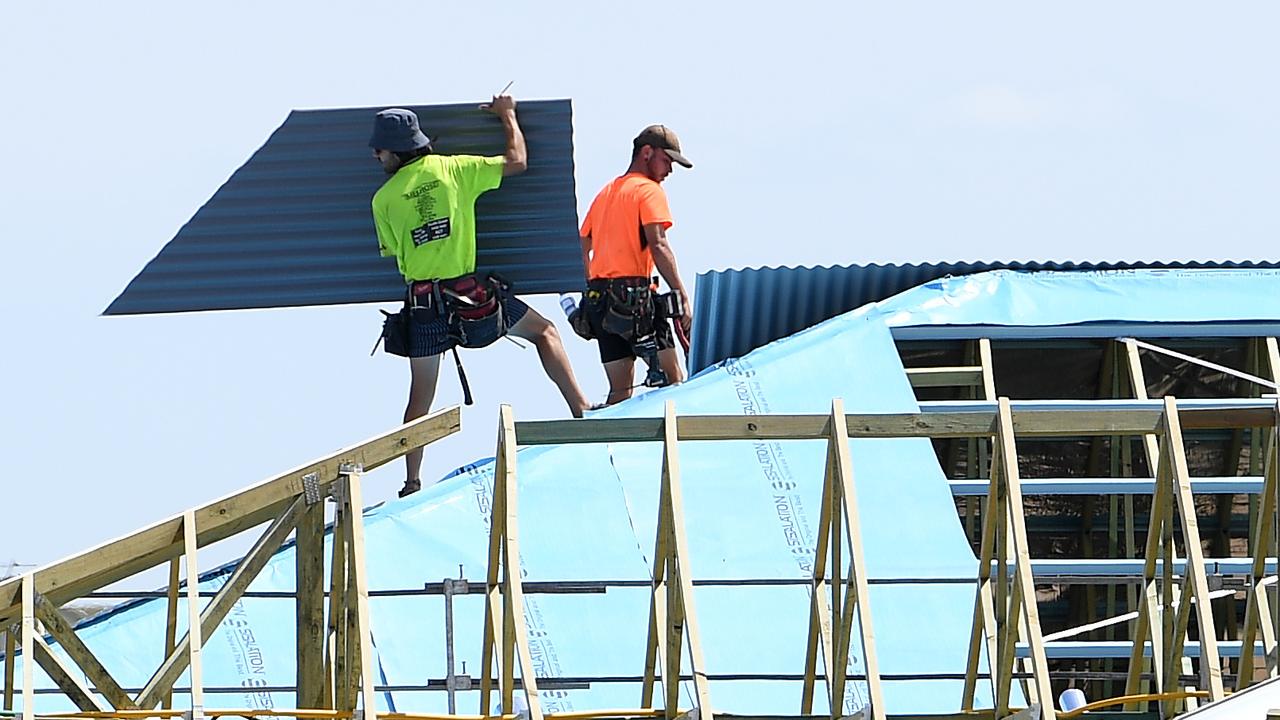Tony Burke flying blind on population
I FEEL very sorry for Sustainable Population Minister Tony Burke.
I FEEL very sorry for Sustainable Population Minister Tony Burke.
For 12 months he slaved over the government's sustainable population strategy commissioning advisory panels, accepting submissions, taking counsel around the country, and then come the big day for the strategy's release, and you wouldn't believe it, but his diary is so full his report had to be released at 2pm on a Friday during budget week. Damn.
Had this report been released the following Monday, the minister could have spent the entire week explaining why he saw fit to provide no metrics around the future population of the Australian continent: no "target" population, not even a tracking rate of growth in a net overseas migration figure to know whether the number of people being added to the nation is rising or falling.
Never mind. I suppose that's the way it goes in politics: sometimes you just have to release a report at a time that is suboptimal in terms of generating media interest.
And the reason why this report provides no target population or tracking rate of growth is because it is too hard to get it right, apparently.
Or at least that's the explanation: "There are many aspects of population growth such as changes in fertility, longevity, emigration that we cannot accurately predict nor directly control." Which I gather means that if you cannot be sure of your prediction then you should not predict.
Could I respectfully inform the departments of planning in all states that they should immediately cease and desist from the strategic planning of our capital cities. Melbourne @ Five Million is clearly a flawed document; there is no certainty Melbourne will ever get to 5 million. Clearly the way forward is to manage only that which can be predicted with complete certainty.
But perhaps I have misread the report. Here's what others are reported to have said about it.
Anti-growth lobbyist Monash University's Professor Bob Birrell seems to be saying the report is an open door to big Australia. And Labor backbencher and fellow anti-growth lobbyist Kelvin Thompson also believes the failure to cite a target population leaves the way open to a bigger Australia.
But former NSW premier Bob Carr, an avowed anti-growth lobbyist who famously said Sydney was full in the 1990s, saw things very differently.
Carr is reported to have said the report made it harder for any government in the future to say "the more the merrier" with regard to immigration. He thought the report closed the door on big Australia.
Peter Verwer, chief executive of the Property Council of Australia, and therefore I suspect a supporter of a bigger Australia, said the report lacked credibility because it did not provide detail of future growth. And here is my point. No one seems to know or is able to agree on what this report is saying, probably not an ideal outcome for a document whose charter is to provide strategic direction. And I am in the "don't know what it means" camp.
Prior to the Burke report, business knew from Treasury's Intergenerational report and the Australian Bureau of Statistics population projections the broad direction of growth.
Post Burke report, I have to say I have no idea what the level of population growth will be in 2011-12. We'll have to wait and see. At some point late next year, the rate of growth will become apparent through the quarterly reports of the ABS.
It's a little bit like getting into a car and not knowing where or how fast we're going. Both business and government needs to at least have a tracking rate of growth that, even if it doesn't prove completely accurate, nevertheless shows the intent of government direction.
How can a house builder or a brick or tile maker schedule production and allocate resources for the coming year if the government is too coy to say where we're headed? Minister, we need these figures to get a handle on household formation. Please minister, tell us where we're going and preferably how fast or how slow?
I was surprised to see scant regard in the report to the impact of the retirement of the baby-boomers generation. Oddly, this demographic faultline that affects the nation and others in this decade does not seem to have been a factor in the Sustainable Australia document. I think it is assumed the workforce "participation push" will offset the boomer retirement factor.
There are some good points to the report that should be acknowledged. There appears to be funding of $240 million allocated to city and regional development programs, including the idea of attracting jobs out of the CBD and city fringe to the suburbs.
In this regard, the report is a good tactical document: it talks about creating sustainable communities and improving the liveability of existing communities. And no doubt this is a laudable objective. But it has to be said that this document fails to deliver as a strategic beacon to show the way to a better, more prosperous and more sustainable Australia. I simply do not see how you can do that without saying where and how fast the nation is expected to grow.
And it's confusing: no one is quite sure what it all means. And in this regard it is even more disappointing the report wasn't released in a week that would have allowed the minister the air time to get his message across.
The next time a minister of any political persuasion spends a year on a report, perhaps it should be mandatory for their personal assistants to lock in a release date giving the report and its architect the media oxygen that such a report deserves.
Bernard Salt is a KPMG Partner; Facebook.com/BernardSalt
Demographer; twitter.com/bernardsalt; bsalt@kpmg.com.au


